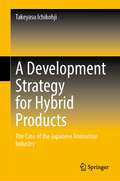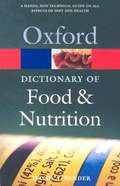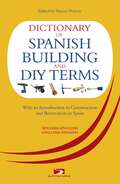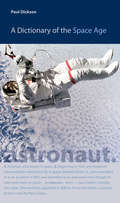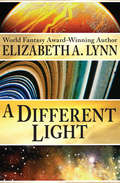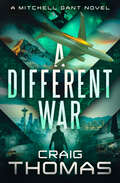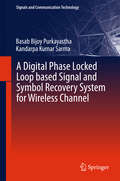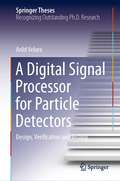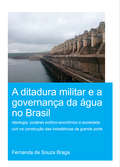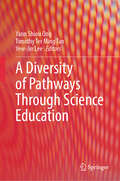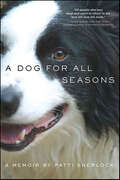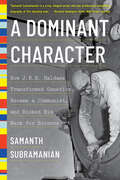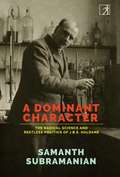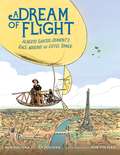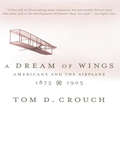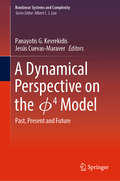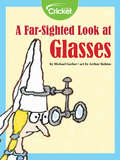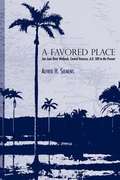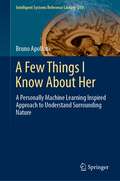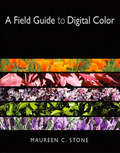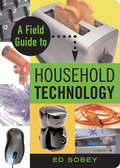- Table View
- List View
A Development Strategy for Hybrid Products: The Case of the Japanese Animation Industry
by Takeyasu IchikohjiThis is the first book that deals with technological innovation in Japanese animation industry from a management perspective. In reviewing prior research and explaining the history of the technology, the author raises the difficulty of dealing with new technologies. In particular, the focus is on systems that combine analog technology (drawing by hand) and digital technology (3D computer graphics or 3DCG) to create a product. This combined technology is referred to as "hybrid technology" in this book, and the development and management of "hybrid products" using this technology are studied. The study was conducted in two stages. The first stage was to determine the engineers’ (animators’) perception of hybrid technology. The results showed that in terms of potential, the hybrid technology of hand-drawn animation combined with 3DCG was rated more highly by engineers than hand-drawn alone. However, in terms of the assessment at that time, hybrid technology was rated higher than 3DCG alone but lower than hand-drawn. Therefore, it was assumed that hybrid technology, while useful, would pose challenges with respect to systematic implementation. The second stage was the development management of hybrid products. The results showed that the "adaptive engineer," who openly accepts other new technologies in the early stages of their emergence contributed to the integration of new and existing technologies.
A Diamond Dream: Final Book of the Jubilee Cycle (Jubilee Cycle)
by Eli K. WilliamIn a near future Tokyo, every action—from blinking to sexual intercourse—is intellectual property owned by corporations that charge licensing fees… Risen from the ashes of bankdeath, Amon Kenzaki, fallen Liquidator and Xenocyst survivor, arrives at the forest from his dreams. He has fulfilled his promise to the PhisherKing to seek truth without relent and can look upon the wonders of those green slopes with clear eyes at last. Yet now, just when his deepest aspiration can finally be fulfilled, he must balance it against the aspirations of all humanity. And he despairs to discover that his love, Mayuko Takamatsu, is still nowhere to be found. MegaGlom demigoddess, Rashana Birla, and her faithful servant, Ono X, seek Amon&’s help in reviving a single dream of liberation with enough facets to accommodate the dreams of all. Meanwhile, the lost secrets of financial life and death promise a kind of digital reincarnation to transcend the twin markets of the Free World, if only he can hold together a miraculous fellowship. In A Diamond Dream, final book of the Jubilee Cycle trilogy, Amon arrives at the very limits of capitalism, where he and his friends must choose which future to stake out on the other side and accept the consequences. A thought-provoking battle between corporate domination and the individual spirit to decide the meaning of freedom.
A Dictionary of Food and Nutrition (2nd edition)
by David A. Bender"This clear and informative guide features entries on hundreds of different foods and dishes, explanations of the often baffling terms on food labels, and information on nutritional value. Ideal for consumers, cooks, students, and anyone else in the fields of catering, home economics, food technology, food science, nutrition, or health care."--BOOK JACKET. Title Summary field provided by Blackwell North America, Inc. All Rights Reserved
A Dictionary of Spanish Building Terms: With an Introduction to Construction and Renovation in Spain
by David HarmanThis dictionary contains essential language for homeowners or tradesmen maintaining or renovating property in Spain. It contains the most up-to-date dictionary of Spanish building terms, including hundreds of technical words you won't find in a usual dictionary. Easy to use, this book will help you to communicate and avoid costly misunderstandings.
A Dictionary of Spanish Building Terms: With an Introduction to Construction and Renovation in Spain
by David HarmanThis dictionary contains essential language for homeowners or tradesmen maintaining or renovating property in Spain. It contains the most up-to-date dictionary of Spanish building terms, including hundreds of technical words you won't find in a usual dictionary. Easy to use, this book will help you to communicate and avoid costly misunderstandings.
A Dictionary of the Space Age (New Series in NASA History)
by Paul Dickson2009 Outstanding Academic Title, ChoiceThe launch of Sputnik 1 in 1957 ushered in an exciting era of scientific and technological advancement. As television news anchors, radio hosts, and journalists reported the happenings of the American and the Soviet space programs to millions of captivated citizens, words that belonged to the worlds of science, aviation, and science fiction suddenly became part of the colloquial language. What’s more, NASA used a litany of acronyms in much of its official correspondence in an effort to transmit as much information in as little time as possible. To translate this peculiar vocabulary, Paul Dickson has compiled the curious lingo and mystifying acronyms of NASA in an accessible dictionary of the names, words, and phrases of the Space Age.Aviators, fighter pilots, and test pilots coined the phrases "spam in a can" (how astronauts felt prelaunch as they sat in a tiny capsule atop a rocket booster); "tickety-boo" (things are fine), and "the Eagle has landed" (Neil Armstrong’s famous quote when Apollo 11 landed on the Moon).This dictionary captures a broader foundation for language of the Space Age based on the historic principles employed by the Oxford English Dictionary and Webster’s New Third International Dictionary. Word histories for major terms are detailed in a conversational tone, and technical terms are deciphered for the interested student and lay reader. This is a must-own reference for space history buffs.
A Different Light
by Elizabeth A. LynnA man makes the ultimate sacrifice to find the man he loves in this &“magical . . . entertaining cross-genre tale&” from the World Fantasy Award–winning author (Library Journal). In the future, cancer has been eliminated on Earth. Despite his diagnosis, celebrated artist Jimson Alleca can live peacefully for another twenty years if he stays on the planet to receive his medication. But Jimson does not want peace; he wants love. Even though it will shorten his lifespan, giving him one single year more, Jimson leaves space-normal to enter &“the Hype,&” a shimmering space outside of space. He goes in search of his former lover, the star captain Russell O&’Neill. What he finds is enough adventure and freedom to fill a lifetime. With A Different Light, author Elizabeth A. Lynn has changed the face of science fiction by depicting a homosexual relationship not as taboo or fantastical but as a normal aspect of everyday life, around which the fantasy and adventure gets built. Since the novel&’s first publication in 1978, readers have loved its depth of prose, its clarity of emotion, and its thrilling adventure. It is no wonder Lynn is a multiple World Fantasy Award–winning writer whose work author George R. R. Martin called &“lyrical and literate, and a treat from the first page to the last.&”
A Different War (The Mitchell Gant Series)
by Craig ThomasA test flight goes down and suspicions of corruption are raised in this &“high-octane thriller&” from the New York Times–bestselling author of Firefox (Daily Express). When a new American airliner crashes on its final test flight, ex-military pilot Mitchell Gant—whose former father-in-law is the CEO of the aircraft company—is called in to investigate, and sets out on the dangerous task of trying to recreate the fatal malfunction in the Arizona desert. Meanwhile in Britain, Marian Pyott is looking into a massive fraud case involving business, politics, and the global marketplace. And soon, Gant&’s and Pyott&’s paths find their paths crossing in this tale of action, suspense, and international intrigue from the author &“widely regarded as the creator of the &‘techno-thriller&’ &” (Wales Online).
A Digital Phase Locked Loop based Signal and Symbol Recovery System for Wireless Channel (Signals and Communication Technology)
by Kandarpa Kumar Sarma Basab Bijoy PurkayasthaThe book reports two approaches of implementation of the essential components of a Digital Phase Locked Loop based system for dealing with wireless channels showing Nakagami-m fading. It is mostly observed in mobile communication. In the first approach, the structure of a Digital phase locked loop (DPLL) based on Zero Crossing (ZC) algorithm is proposed. In a modified form, the structure of a DPLL based systems for dealing with Nakagami-m fading based on Least Square Polynomial Fitting Filter is proposed, which operates at moderate sampling frequencies. A sixth order Least Square Polynomial Fitting (LSPF) block and Roots Approximator (RA) for better phase-frequency detection has been implemented as a replacement of Phase Frequency Detector (PFD) and Loop Filter (LF) of a traditional DPLL, which has helped to attain optimum performance of DPLL. The results of simulation of the proposed DPLL with Nakagami-m fading and QPSK modulation is discussed in detail which shows that the proposed method provides better performance than existing systems of similar type.
A Digital Signal Processor for Particle Detectors: Design, Verification and Testing (Springer Theses)
by Arild VelureTo cope with the new running conditions in the ALICE experiment at the Large Hadron Collider at CERN, a new integrated circuit named SAMPA has been created that can process 32 analogue channels, convert them to digital, perform filtering and compression, and transmit the data on high speed links to the data acquisition system. The main purpose of this work is to specify, design, test and verify the digital signal processing part of the SAMPA device to accommodate the requirements of the detectors involved. Innovative solutions have been employed to reduce the bandwidth required by the detectors, as well as adaptations to ease data handling later in the processing chain. The new SAMPA device was built to replace two existing circuits, in addition to reducing the current consumption, and doubling the amount of processing channels. About 50000 of the devices will be installed in the Time Projection Chamber and Muon Chamber detectors in the ALICE experiment.
A Ditadura Militar e a Governança da Água no Brasil: Ideologia, Poderes Político-Econômico e Sociedade Civil na Construção das Hidrelétricas de Grande Porte (The Role of Ideology, Political-Economic Power and Civil Society in the Construction of Large Hydropower Dams) (IHE Delft PhD Thesis Series)
by Fernanda de Souza BragaIn recent decades there has been an exponential increase in large hydroelectric plants in Brazil, especially in the Amazon region. These large hydraulic structures impact the environment and the lives of people living in the places where they settle and require a special type of water governance. The dictatorial regime (1964-1985) created a "standard" for the construction of these great structures, through an institutional and legal framework, which benefited the Brazilian business elite but also, through the creation of a popular imagination, which shows itself lasting progress on the country's progress and development. The suspension of security, the fragility of institutional environmental structures, the disrespect for indigenous reserves, the lack of clarity about the concept of "affected population" and the non-payment of fair compensation were identified as one of the main challenges for a democratic water governance in the country. In the late 1970s, the Dam-Affected Movement (MAB) began its organization and is also studied in this research. The study is an important and insightful academic contribution to the understanding of the main bottlenecks of effective water governance in Brazil.
A Diversity of Pathways Through Science Education
by Yew-Jin Lee Yann Shiou Ong Timothy Ter Ming TanThis book presents the work of academics who contributed their work at the International Science Education Conference (ISEC) 2021, in alignment with the conference theme '20/20 Vision for Science Education Research.' Collectively, the chapters aim to evoke intellectual dialogues on current and future trends in science education. It features chapters that are grouped thematically into three sections: Questions and Questioning in Science/STEM education, Developing Science Teaching and Assessment, and History, Philosophy, and Sociology of Science/Engineering, and Informal Learning. Through the various sections, the book presents empirical studies in science and engineering classrooms or laboratories, puts forward a framework for problem-based learning, provides an account of a prominent scientist’s efforts in promoting practical science through analysis of historical documents, and uncovers trends in informal science learning space research through a review of literature. Each section is introduced by a commentary with further insights and thought-provoking questions on ideas raised in the chapters. The book also includes a 'Notes to Our Future Colleagues' section in each chapter, which presents readers with a collective vision for the state of science education research in the year 2050.
A Dog for All Seasons: A Memoir
by Patti Sherlock“A moving memoir of a loving relationship with a dog and the trials and tribulations of living on a western sheep farm.” —Temple Grandin, New York Times–bestselling authorPatti Sherlock's working relationship with her Border Collie, Duncan, got her through the ups and downs of sixteen years on a sheep farm in Idaho. During that time, Duncan was an unwavering companion through the destruction of Patti's marriage, her children inevitably leaving home one by one, and eventually, her decision to stop raising sheep. Patti's life on the farm is a reflection of beginnings and endings, and the cycle of seasons in all of our lives.“If you've forgotten how to see miracles in everyday moments, this book will remind you. It's a story about the real world, the world where human beings live in constant contact with nature, and where animals are more than best friends.” —W. Michael Gear and Kathleen O'Neal Gear, New York Times–bestselling authors“A Dog for All Seasons gives us the convergence of a remarkable woman, a wonderful dog, and a fascinating way of life. It's the literary equivalent of fresh air, pure water, and sparkling sunlight. The book should be savored.” —Tim Sandlin, author of Skipped Parts“Tender, wise, and deeply affecting, Sherlock's vignettes will make readers smile and sigh and wish for their own Duncan.” —Publishers Weekly
A Dominant Character: The Radical Science And Restless Politics Of J. B. S. Haldane
by Samanth SubramanianA biography of J. B. S. Haldane, the brilliant and eccentric British scientist whose innovative predictions inspired Aldous Huxley’s Brave New World. J. B. S. Haldane’s life was rich and strange, never short on genius or drama—from his boyhood apprenticeship to his scientist father, who first instilled in him a devotion to the scientific method; to his time in the trenches during the First World War, where he wrote his first scientific paper; to his numerous experiments on himself, including inhaling dangerous levels of carbon dioxide and drinking hydrochloric acid; to his clandestine research for the British Admiralty during the Second World War. He is best remembered as a geneticist who revolutionized our understanding of evolution, but his peers hailed him as a polymath. One student called him “the last man who might know all there was to be known.” He foresaw in vitro fertilization, peak oil, and the hydrogen fuel cell, and his contributions ranged over physiology, genetics, evolutionary biology, mathematics, and biostatistics. He was also a staunch Communist, which led him to Spain during the Civil War and sparked suspicions that he was spying for the Soviets. He wrote copiously on science and politics in newspapers and magazines, and he gave speeches in town halls and on the radio—all of which made him, in his day, as famous in Britain as Einstein. It is the duty of scientists to think politically, Haldane believed, and he sought not simply to tell his readers what to think but to show them how to think. Beautifully written and richly detailed, Samanth Subramanian’s A Dominant Character recounts Haldane’s boisterous life and examines the questions he raised about the intersections of genetics and politics—questions that resonate even more urgently today.
A Dominant Character: The Science and Politics of J.B.S. Haldane
by Samanth SubramanianJ.B.S. Haldane, scientist extraordinaire—born in Britain yet spiritually bound to India—remains one of the most enigmatic geniuses of the modern era. Here is a man who saw action in two world wars, engaged in the most radical politics of his day, conducted groundbreaking scientific research, and wrote with flair and conviction—yet Haldane&’s universe remains shrouded in mystery. <P><P>Award-winning author Samanth Subramanian’s latest offering undoes this travesty. Besides shedding light on Haldane’s contributions to genetics and evolutionary biology—he was the first to calculate the rate at which mutations occur and accumulate in genes—the book illuminates Haldane&’s inner world—his towering intellect, his radical vision of society, his provocative philosophy, and his attempts a wrestling with the essential moral questions that scientific progress must raise. <P><P>Equally, the book dwells on Haldane’s years in India—his journey to the nation; his affiliation with the Indian Statistical Institute, Calcutta; his attachment to the Genetics and Biometry Laboratory in Bhubaneshwar (where he died). Dronamraju’s description of Haldane as ‘the last man who knew everything’ was, at its simplest, an acknowledgement of his command over multiple subjects. But it was also an astute observation that Haldane’s era was the last time when the realms of scientific knowledge were limited enough for a single person to apprehend in near-entirety. To know everything was to see the forces of the world unified and to conceive of life in its full complexity. A Dominant Character will give readers a taste of that heady sensation.
A Dream of Flight: Alberto Santos-Dumont's Race Around the Eiffel Tower
by Rob Polivka Jef PolivkaDebut nonfiction duo Rob and Jef Polivka offer an illustrated madcap adventure in A Dream of Flight, a dynamic biography of Alberto Santos-Dumont, an inventor who risked everything to reach the skies. And sure enough, his successes and failures brought the world’s people closer together.Ready? Set. Fly! At the turn of the twentieth century, no aviation prize was more coveted in Europe than the Deutsch Prize. To win it, a pilot would have to fly a balloon from Paris’s Aero Club around the Eiffel Tower and back in thirty minutes or less. Who would be the first to succeed?Alberto Santos-Dumont thought he could. His latest design, Airship No. 6, was perfected from the countless lessons he learned during previous crashes. On the morning of October 19, 1901, Santos was making good time in the race when disaster struck—his motor had sputtered to a stop mid-air! Would Santos make it to the finish line in time—let alone survive?
A Dream of Wings: Americans and the Airplane, 1875-1905
by Tom D. CrouchThe story of a handful of talented American engineers and adventurers who labored to conquer gravity in a flying machine. When Orville and Wilbur Wright soared over Kill Devil Hills in North Carolina's outer banks and solved the problem of aerial navigation, they wrote the last chapter in a long story. For decades prior, a small community of engineers, scientists, and dreamers--men named Chanute and Langley and Herring--had tried to make the ascent in every conceivable craft, from kites and gliders to an assortment of powered flying models. This fascinating assortment of characters and contraptions comes to life in Tom Crouch's classic A Dream of Wings. In the quest for flight, aeronautical societies were formed and broke apart, successes were celebrated, hopes rose and fell, and lessons were learned and built upon. The dreamers who blazed the path to a flying machine are bravely realized in these delightful pages.
A Dynamical Perspective on the ɸ4 Model: Past, Present and Future (Nonlinear Systems and Complexity #26)
by Jesús Cuevas-Maraver Panayotis G. KevrekidisThis book presents a careful selection of the most important developments of the \phi^4 model, offering a judicious summary of this model with a view to future prospects and the challenges ahead. Over the past four decades, the \phi^4 model has been the basis for a broad array of developments in the physics and mathematics of nonlinear waves. From kinks to breathers, from continuum media to discrete lattices, from collisions of solitary waves to spectral properties, and from deterministic to stochastic models of \phi^4 (and \phi^6, \phi^8, \phi^12 variants more recently), this dynamical model has served as an excellent test bed for formulating and testing the ideas of nonlinear science and solitary waves.
A Far-Sighted Look at Glasses
by Michael GerberHave you ever wondered where glasses came from? This comic takes a fun look at the invention of glasses starting with the Greeks and Romans. Then it looks at attempts by the Spanish, Chinese, French, and even inventor Ben Franklin to improve the design.
A Farm Through Time
by Angela Wilkes Eric ThomasThis is the story of a farm and of its place in a changing landscape, from the Middle Ages to the present day. Following the rhythm of the seasons, it shows generations of farmworkers carrying out their daily tasks, ploughing and sowing, harvesting and haymaking. The book traces the development of the farm from a 9th century small-holding, rented from the local lord of the manor, to a large, mechanised farm of the 21st century. Eric Thomas' evocative illustrations capture the atmosphere of a rural idyll, showing farming communities working on the land, while liftable flaps open to reveal activities inside the farm buildings. Angles Wilkes' lyrical text explains traditional crafts and customs, from repairing hedges to making cheese. A Farm Through Time is a portrait of country people, of disappearing crafts and the emergence of new technology, and of how, over time, farming has altered the landscape itself.
A Favored Place: San Juan River Wetlands, Central Veracruz, A.D. 500 to the Present
by Alfred H. SiemensI doubt there is a wetland environment anywhere in the Americas inhabited, used, and modified as long as San Juan Basin, and by as many cultures with different technologies. This story needs to be told. --William E. Doolittle, Professor of Geography, University of Texas at Austin The wetlands of the San Juan Basin in Central Veracruz, Mexico, have been a favored place since the fifth century A. D. , when Prehispanic people built an extensive network of canals and raised fields that allowed for almost year-round agriculture. Alfred Siemens' discovery of the remains of this network in the 1970s led him to uncover fifteen centuries of land-use history in the region. This book contains a full record of his findings. Siemens organizes his history of the San Juan Basin around the question: What relationships exist between Prehispanic agriculture and the production systems of the tropical lowlands in our own time? This focus allows him to chart the changes in human perceptions and uses of the landscape, from the Prehispanic wetland agricultural system to the drained pastures of today's cattle ranches. Amplified with air oblique photography, maps, and tables, and enriched with data from archaeology and colonial archives, this is an authoritative historical geography of a wetland landscape. Or, in the author's more modest words, It seems to me that what I have here is a biography of a swamp.
A Few Things I Know About Her: A Personally Machine Learning Inspired Approach to Understand Surrounding Nature (Intelligent Systems Reference Library #219)
by Bruno ApolloniThis book reconsiders key issues, such as description and explanation, which affect data analytics. For starters: the soul does not exist. Once released from this cumbersome roommate, we are left with complex biological systems: namely, ourselves, who must configure their environment in terms of worlds that are compatible with what they sense. Far from supplying yet another cosmogony, the book provides the cultivated reader with computational tools for describing and understanding data arising from his surroundings, such as climate parameters or stock market trends, even the win/defeat story of his son football team. Besides the superposition of the very many universes considered by quantum mechanics, we aim to manage families of worlds that may have generated those data through the key feature of their compatibility. Starting from a sharp engineering of ourselves in term of pairs consisting of genome plus a neuron ensemble, we toss this feature in different cognitive frameworks within a span of exploitations ranging from probability distributions to the latest implementations of machine learning. From the perspective of human society as an ensemble of the above pairs, the book also provides scientific tools for analyzing the benefits and drawbacks of the modern paradigm of the world as a service.
A Field Guide to Buying Organic
by Luddene Perry Dan SchultzThe definitive guide to healthful, affordable food shopping in the Organic Age--from a pioneer in the organic movement. What does it really mean when a food is labeled organic? While many of us believe there are good reasons to buy organic, what exactly are they? The authors of this indispensable handbook sift fact from fiction to help you make informed decisions that are right for you. Here is everything you need to know, including when paying more for organic is worth it--and when it's not. A Field Guide to Buying Organic provides you with: ·Self-tests to determine your current organic-shopping habits--and the type of organic shopper you want to become ·A primer on organic food standards, labels, and seals ·Health and quality comparisons of organically grown versus conventionally grown produce ·An aisle-by-aisle supermarket guide to information about the most popular organic produce, dairy, meat and poultry, baked goods, nuts, seeds, grains, convenience foods, and drinks ·The truth about pesticides, hormones, genetically modified foods (GMOs), toxins, and bacteria ...Plus illustrations featuring product logos and contact information, and a fascinating overview of the evolution of organics From the Trade Paperback edition.
A Field Guide to Digital Color
by Maureen StoneMaureen Stone's field guide to digital color presents a survey of digital color with special emphasis on those fields important for computer graphics. The book provides the foundation for understanding color and its applications, discusses color media and color management and the use of color in computer graphics, including color design and selecti
A Field Guide to Household Technology
by Ed SobeyIllustrating how a fire alarm detects smoke and what the "plasma" is in a plasma screen television, this fascinating handbook explains how everyday household devices function and operate. More than 180 different household technologies are covered, including gadgets unique to apartment buildings and houseboats. Devices are grouped according to their "habitats"--the living room, family room, den, bedroom, kitchen, bathroom, and basement--and feature a detailed description of what the device does and how it works, as well as a photograph for easy identification. With helpful sidebars describing related technical issues, such as why a cheap dimmer switch can interfere with radio reception, this handbook for curious readers provides carefully detailed descriptions and the history behind many of the older household technologies like toasters and faucets to newer technologies like motion detectors, TiVo, and satellite radio.
